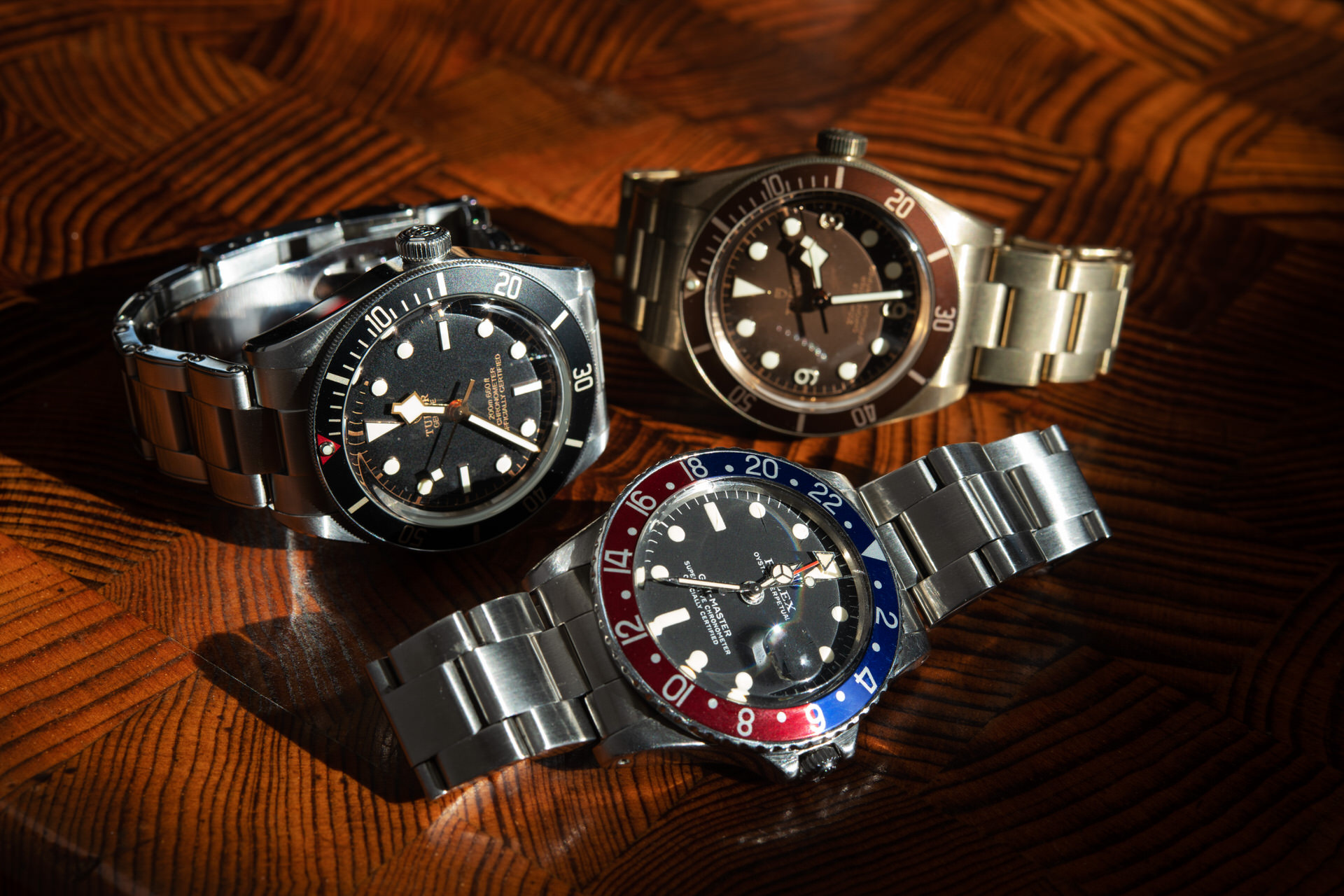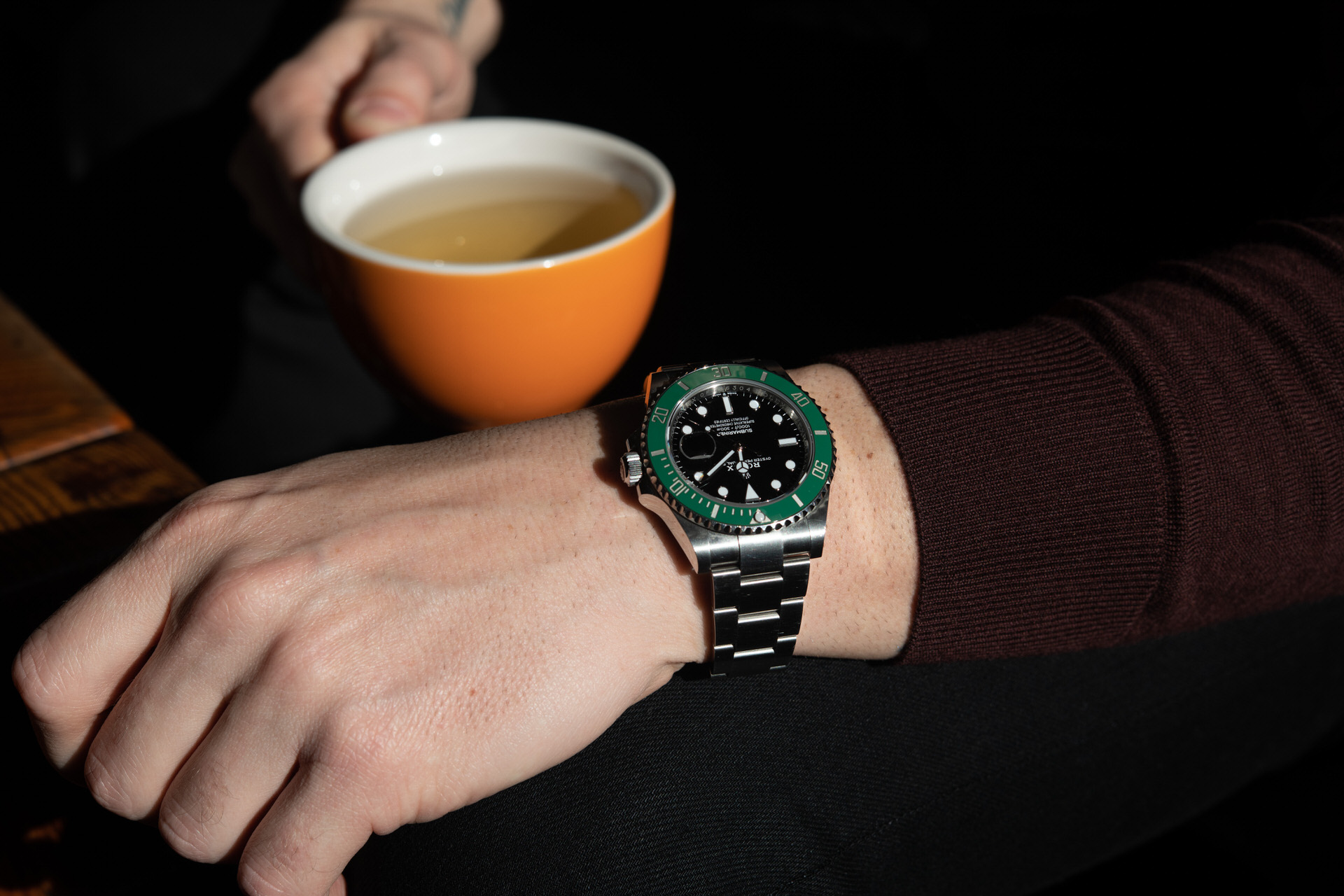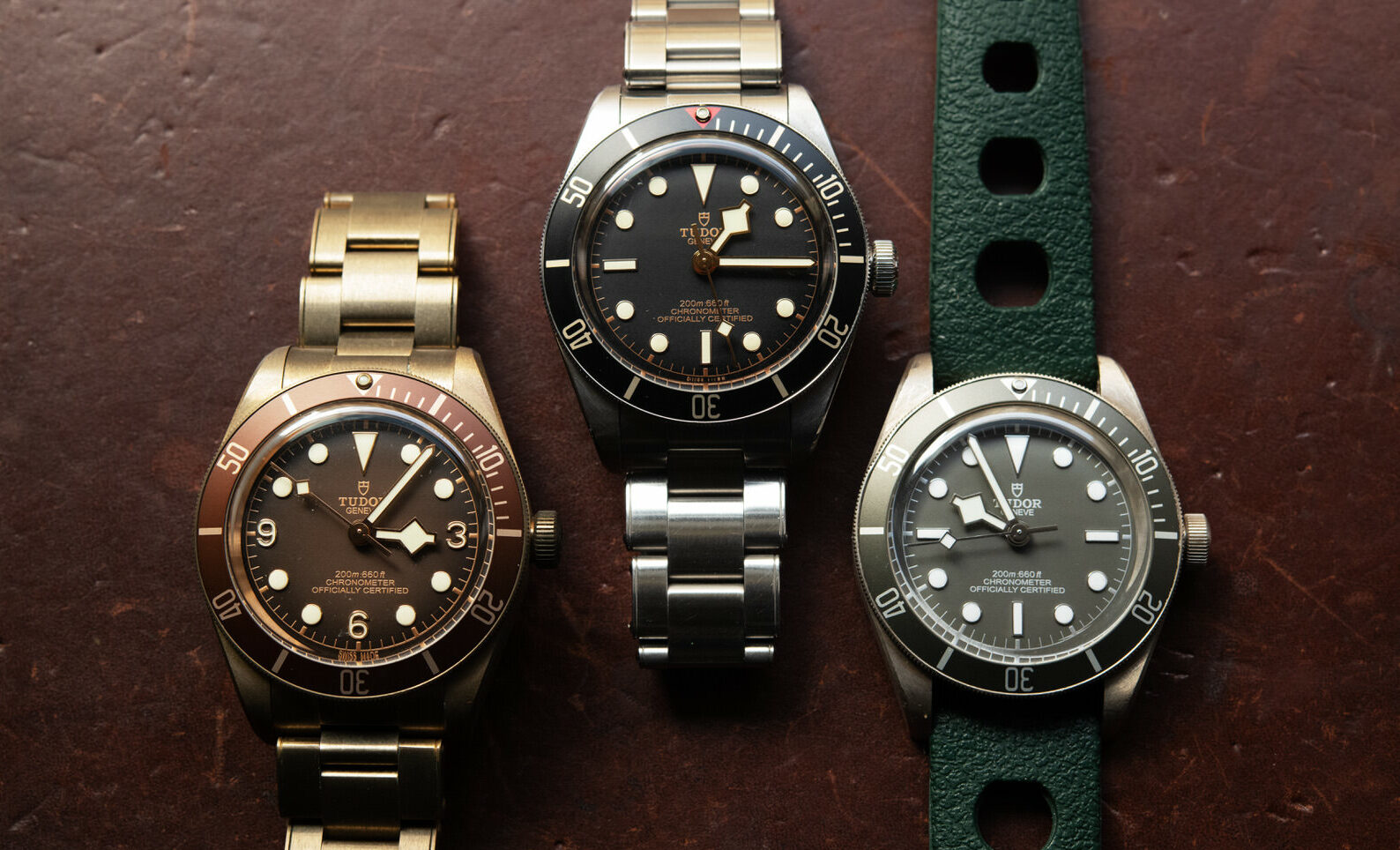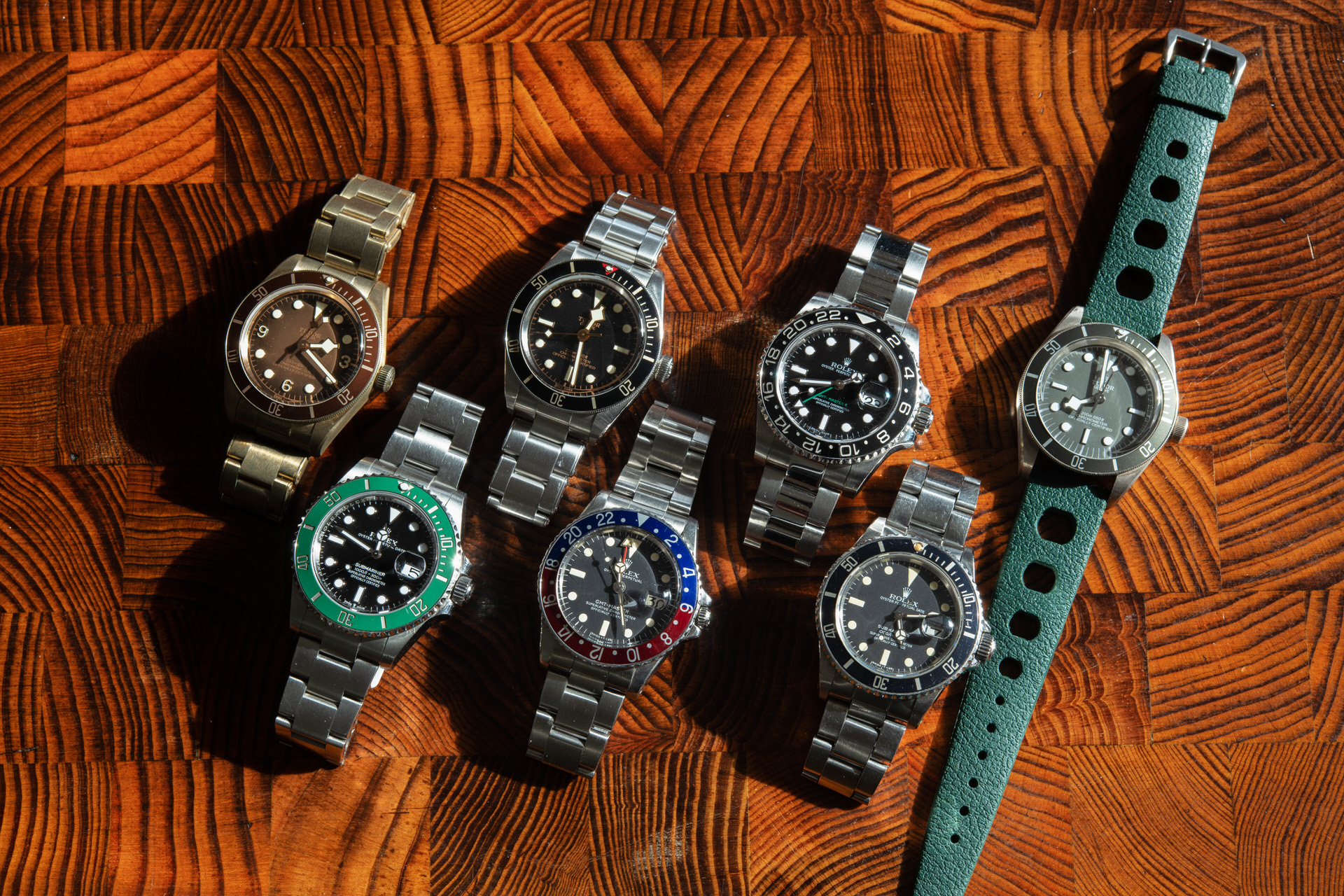As someone that not only deals in, but truly loves vintage Rolex and what the brand once represented, the reality that they have truly lost their way struck me particularly hard recently. As my love affair with Rolex’s storied sibling brand Tudor and their modern output continues to grow, it’s hard not to see how brilliantly Tudor evolved from Rolex’s funkier, more accessible little brother, to the brand ultimately carrying the weight of not just Rolex’s history and classic design aesthetic, but the very spirit the Crown seems to have forgotten.



Tudor right now is a great example of what Rolex once was as a watchmaker, an innovator, but one with a sense of style – whereas Rolex’s modern releases feel like a factory of regurgitating and recycling the things that they’ve already done without much thought. When Rolex does bring an advancement or innovation to the table these days, it’s typically nominal and ultimately useless to the daily wearer (99% of their market). An example of the latter problem is the Deepsea Challenge Sea-Dweller, which has a nearly unwearable 50mm case and was made to go to unimaginable depths. Yes, that watch provides an advancement in technology, but it isn’t practical and it certainly isn’t useful for anyone. Not even professional divers. When I look back at milestones in Rolex’s sports watch history, I think of when they advanced the Rolex Submariner reference 1680 to the 16800; the brand updated the watch’s entire case, switched from an acrylic crystal to a sapphire crystal, updated the movement to a quickset model, and packed in a bevy of functional advancements that were applied to a core model at once. That way of thinking and evolution is how I see Tudor operating now, but as they simultaneously stay true to their heritage and traditional aesthetic. It’s a balancing trick that every watch manufacturer could learn from as the vintage market continues to gather momentum.
Tudor has struck a balance between progress and heritage, which is something Rolex seems to have wholly failed to do. Tudor produces new ideas within the scope of their classic style, and they’re doing so in a very tasteful and interesting way which often celebrates the history of Rolex better than Rolex themselves. For example, producing a no-date 39mm diver with pointed crown guards in titanium. That watch is incredibly cool and a useful daily wear. And on the more popular end, pretty much every piece released within the Black Bay lineup has shown Tudor taking their brand seriously, but not so seriously that they can’t bring fun things to market like a sterling sterling silver dive watch – which is essentially designed to get beat up and take on patina. And while things like the all-blue Black Bay Fifty-Eight are undeniably modern, it’s a watch that does a fantastic job at winking and nodding at the brand’s classic “Snowflake” Subs.



From my perspective, it seems like Tudor is being run by enthusiasts and Rolex is being run by a boardroom. I think a lot of it has to do with the risk that Rolex has to shoulder as such an iconic moniker, and all of this is not to say that Rolex doesn’t still produce some interesting things with their more experimental offerings, but these watches are typically vanity releases produced in batches of one or two examples – things like an eccentric dial on a Day-Date. Only two people in the world are going to actually get their hands on one and these pieces are meant to sell the ideology and panache of Rolex, which would be fine if the average person could actually get their hands on Rolex’s basic core offerings in steel these days, but we all know the reality of perpetually empty cases at ADs and endless waitlists. For exhibition only, indeed. Making enthusiast offerings unobtainable to the masses of actual enthusiasts really dashes a lot of interest in the brand’s modern offerings because it underlines just how little Rolex truly cares about the enthusiast side of the market these days.
On the other end of the spectrum, it feels like everything that Tudor puts out speaks to the enthusiast community, and that shows in the fact that every piece they produce these days gets immensely good reviews across the board. True watch enthusiasts are excited about the brand and if you go on social media and look at the difference between the demographics currently talking about Tudor and the demo talking about Rolex, you’ll find it’s incredibly different groups. And from my experience as a vintage dealer, I have more clients with great vintage Rolex collections that wear a modern Tudor for a weekend watch or a travel piece than anything else.
An analogy to the current supercar market works well here: Do you really want a wildly expensive and ostentatious supercar with an unusable amount of horsepower that you’ll never even get to open up anywhere but the track? That’s the plight of the modern Submariner. Not only will you never need a modern Submariner’s tech innovations, but they’ve become so hard to get that you won’t wear it as often because it’s become a piece of jewelry rather than a tool watch. I’d argue that modern Rolex has lost the spirit of tool watches entirely. Wouldn’t you rather have something that you can really use? That you can enjoy without fear? Something that at least represents the original spirit of its design and innovation? Tudor’s modern watches do just that and, in my opinion, they’ve superseded Rolex’s relevancy because of it.
Beyond the lack of spirit, I think a lot of Rolex’s recent releases simply don’t make sense and seem to me as if they were designed by a committee without vision or even a basic concept beyond producing a “new” release. My favorite example is the two-tone Explorer I, which is potentially the most unnecessary watch Rolex has ever made, and is only beaten in banality by the two-tone Sea-Dweller they put out. That point is made obvious by the current market conditions of those particular watches.Throughout Rolex’s history, you can point to a logical purpose or design vision for every watch they’ve made. Even ultra luxurious pieces, like a full gold Submariner, revel in being tongue-in-cheek and being a bit ridiculous, but the opulence was the point with those pieces. Even more recently, no one that I know as a watch world pro has ever asked for a “destro” GMT-Master.

Often when I meet new watch collectors, and especially young people that are starting to perk their ears up about watches for the first time, they’re focused on one of three pieces to start their journey: A Tudor Black Bay, a Rolex Datejust, or an Omega Speedmaster. A lot of them end up with the Black Bay, and it makes sense because it can be worn in a myriad of different environments and with a wide range of sartorial options, and it’s not outright flashy, but has enough design details to really make it interesting. The Black Bay Fifty-Eight really nails that brief and it does so by pulling elements from Tudor and Rolex’s past, so it’s not just interesting to new buyers who simply appreciate a clean design from a trusted brand, but to the seasoned enthusiast that sees the design language in a different light. It also introduces some classic design elements to new collectors that they may well have not noticed before, and that tends to start them down the vintage path. These watches are also under $5k and offered in several colors and materials, so you can still express yourself a bit within the Black Bay range. My personal preference is for the black dial, which I think is the perfect approachable modern daily driver. And unlike modern steel Rolex, you can typically walk out of a Tudor AD with a Black Bay in-hand that same day.
Now, as a lover of Rolex, I do hope they find their way back to their roots someday. I think a great way they could do this is by reworking a lot of what they’re already making, and while the obvious answer here is to start with their core offerings, I would probably take one of their most impressive watches, the Sky-Dweller, and redesign it to appeal more to the enthusiast market. As it stands, the Sky-Dweller is a watch that really only speaks to people after something incredibly flashy, but it’s a watch that boasts such an amazing complication and one that is operated in an interesting and innovative way. I think they missed their true market with it as an extremely functional watch and one of the great modern GMTs, but its massive fluted bezel and large 42mm case really rob it of a lot of its charm.





Another area I think Rolex has done well in recently is producing things like the “palm dial” Datejust, which is a really cool watch in person, and has a whimsical and fun feel that I think Rolex should be more comfortable playing with at this point in its history. The “palm dial” is a great example, and so are the 36mm Oyster Perpetuals that they made with brightly colored dials. I find those watches actually tend to appeal to clients of mine that are serious vintage collectors more than anything else Rolex is making these days because they show a side of the company that’s unexpected and playful, but they both harken back to what we love about vintage Rolex in their proportions and sizing. For the time being, however, I’ll stick with modern Tudor, the ideal modern watch for the vintage enthusiast

Check out 'Reference Tracks' our Spotify playlist. We’ll take you through what’s been spinning on the black circle at the C + T offices.

Never miss a watch. Get push notifications for new items and content as well as exclusive access to app only product launches.
Sign up for our newsletter to receive updates and exclusive offers